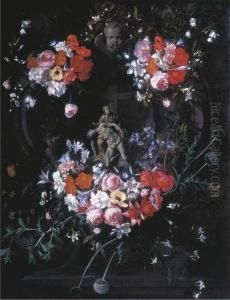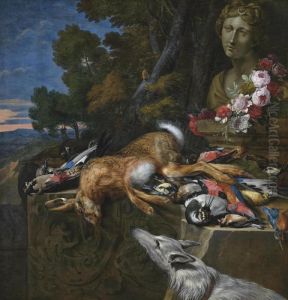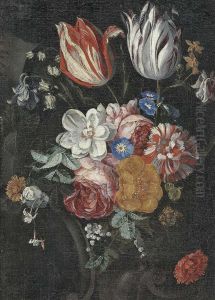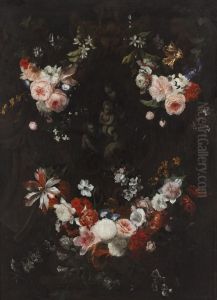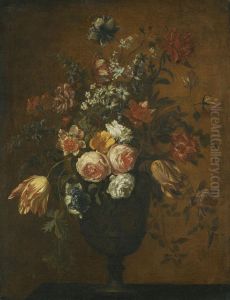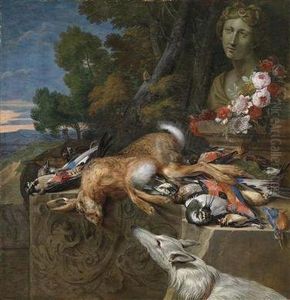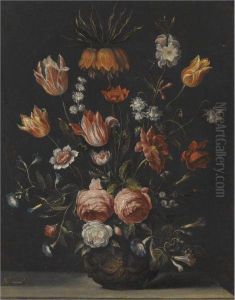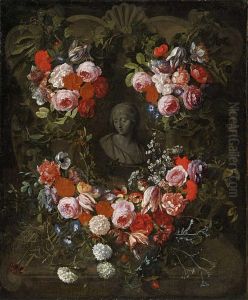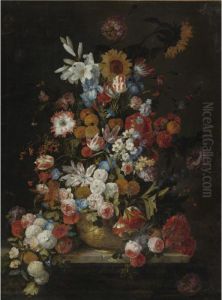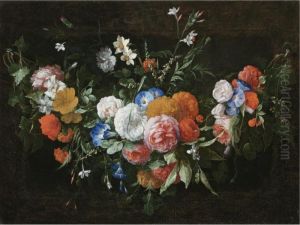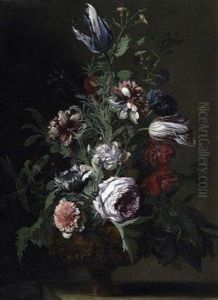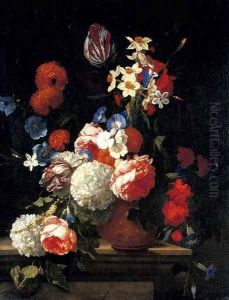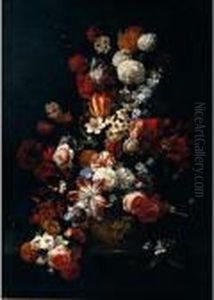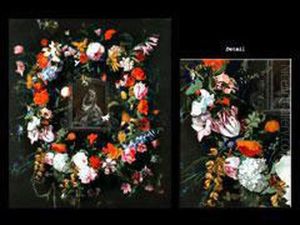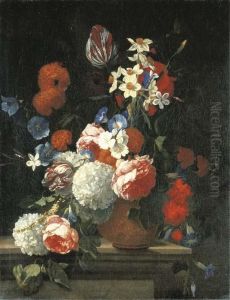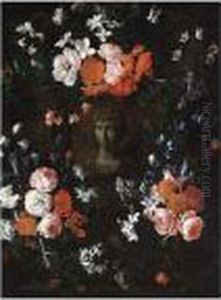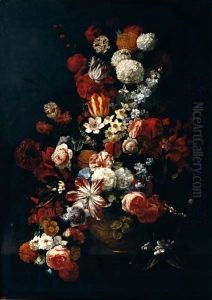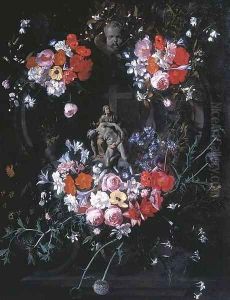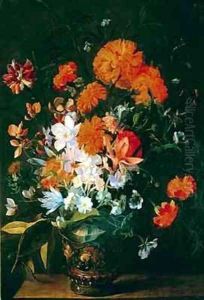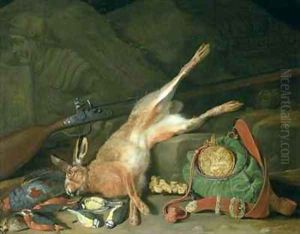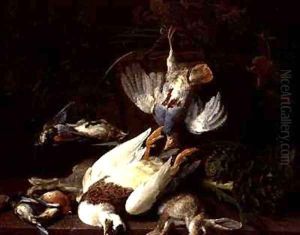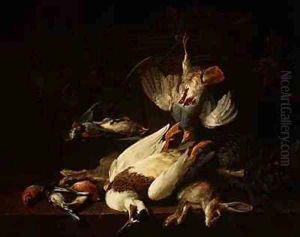Hieronymus Galle I Paintings
Hieronymus Galle I was a Flemish Baroque painter who was born in Antwerp in 1625. He hailed from a family of artists; his father, Philip Galle, was an engraver and publisher, and his brother, Cornelis Galle the Younger, also pursued a similar path in engraving. Hieronymus, however, was more drawn to painting and is known for his work in the genre of still life.
During his lifetime, Hieronymus Galle I became a master in the Antwerp Guild of St. Luke, which was a common practice for artists of the time to gain recognition and the right to sell their works. His paintings often depicted intricate arrangements of objects, which included floral pieces, garlands, and other natural elements that were rich in symbolism and hidden meanings, following the traditions of Flemish still-life painting.
Galle's works were characterized by a meticulous attention to detail and a vibrant quality that brought his compositions to life. Despite the fact that his paintings were well-crafted, he did not achieve the same level of fame as some of his contemporaries. Nevertheless, his contributions to the Flemish tradition of still life are noted for their technical skill and the subtle interplay of light and shadow.
Hieronymus Galle I’s work was part of a larger movement in Flemish art that celebrated the beauty and variety of the natural world through realistic depiction. His paintings can be seen as a reflection of the scientific interest in nature that was growing during the 17th century, as well as the fascination with the exotic and the accumulation of wealth and objects that were prevalent among the upper classes of his time.
He died in 1679, and while he may not be as widely known as other Flemish masters, his work remains a testament to the rich artistic tradition of the period. His paintings can still be appreciated today for their beauty and historical value, giving us insight into the world of 17th-century Flemish art.
